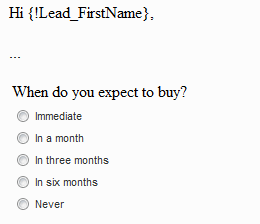Drip Marketing has been around for some time now – long enough for people to understand that it is a way of keeping your company, product, or service ‘on top of mind’ over a period of time. It has been found to be a successful strategy, and is being used by a growing number of small businesses who realize that its benefits are not only the province of large companies.
There seem to be two different types of drip marketing campaigns – at least that I have observed. As far as I can tell, they produce very different results.
The first type is similar to mass emailing – only that mass emails are executed as drips. ie. Don’t only send one mass email; send a number of them, with perhaps some changes from one to the next.
The second type employs some level of interaction, and uses this interaction to determine what to do next.
The first type falls under the category of one-way communication (“Hello there! I have something to tell you!”), while the second uses, and relies on two-way communication to succeed.
The first type usually results in emails that are too long. There can be a number of reasons for this, but typically, senders are trying to get as much information as they can into each message. Result: recipients’ eyes gloss over, or the message gets deleted or ignored.
A number of articles have been written about why your emails are too long (Why your emails are too long — and how to improve, 10 Reasons Your Emails Are Too Long), and they get near, but don’t get the cigar. The real reason is relevance to the recipient’s question. This is the point. If you are employing one-way communication, you don’t have interactivity. Without interactivity, how do you know what the recipient is asking? And if you don’t know the question, how do you know that your message is relevant?
If you are the sender of interactive emails, your messages can be short, and to the point. Result: they are much more likely to be read – and responded to.
People no longer have time for wordy emails – especially when the communication is one-way. Email is not dead, and email campaigns will be around for a long time to come. The success of services like Twitter have shown that messages don’t have to be long to be understood. And this is especially true when interaction provides the context by which we communicate. So be brief!
As Baltasar Gracian (Spanish Philosopher) said: “Good things, when short, are twice as good.”
BizConnector employs two features which enable relevant interactivity in drip marketing campaigns:
- It is based on rules, which only fire when their conditions are satisfied. Rule conditions are allied with relevance.
- The Instant Feedback feature updates records in real-time when recipients respond to questions in the body of emails.
Isn’t it time you made your campaigns interactive?




